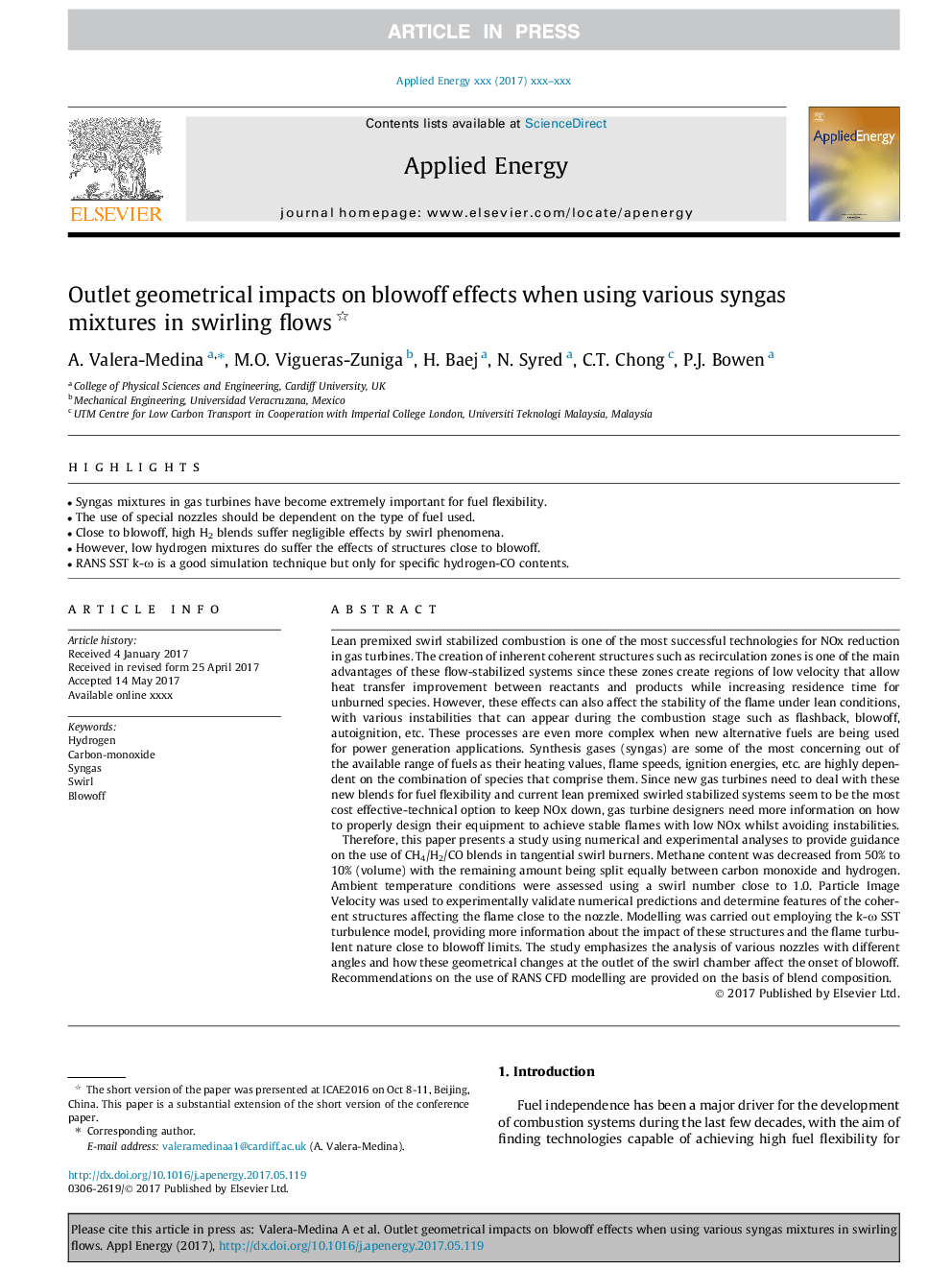| Article ID | Journal | Published Year | Pages | File Type |
|---|---|---|---|---|
| 6681879 | Applied Energy | 2017 | 13 Pages |
Abstract
Therefore, this paper presents a study using numerical and experimental analyses to provide guidance on the use of CH4/H2/CO blends in tangential swirl burners. Methane content was decreased from 50% to 10% (volume) with the remaining amount being split equally between carbon monoxide and hydrogen. Ambient temperature conditions were assessed using a swirl number close to 1.0. Particle Image Velocity was used to experimentally validate numerical predictions and determine features of the coherent structures affecting the flame close to the nozzle. Modelling was carried out employing the k-Ï SST turbulence model, providing more information about the impact of these structures and the flame turbulent nature close to blowoff limits. The study emphasizes the analysis of various nozzles with different angles and how these geometrical changes at the outlet of the swirl chamber affect the onset of blowoff. Recommendations on the use of RANS CFD modelling are provided on the basis of blend composition.
Related Topics
Physical Sciences and Engineering
Energy
Energy Engineering and Power Technology
Authors
A. Valera-Medina, M.O. Vigueras-Zuniga, H. Baej, N. Syred, C.T. Chong, P.J. Bowen,
